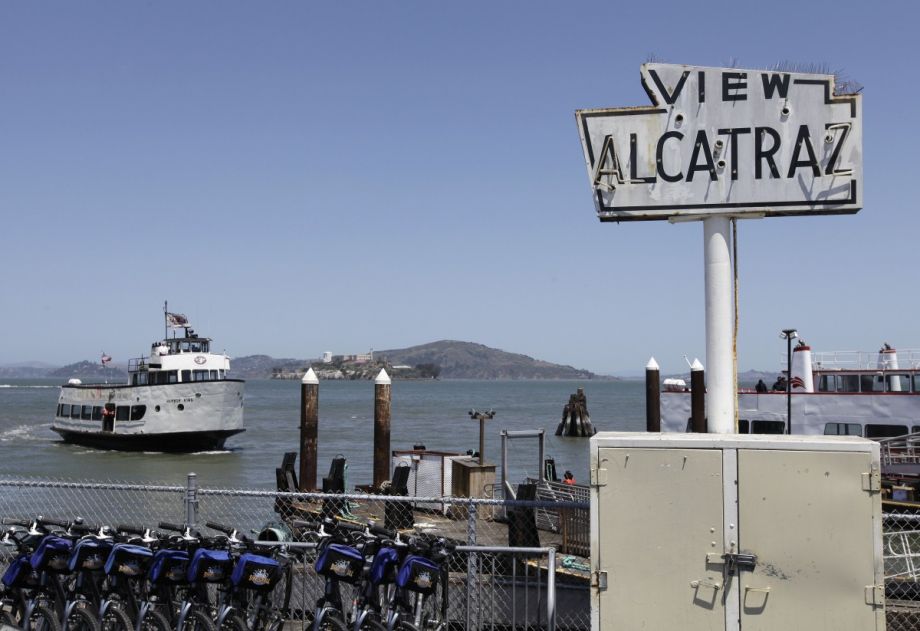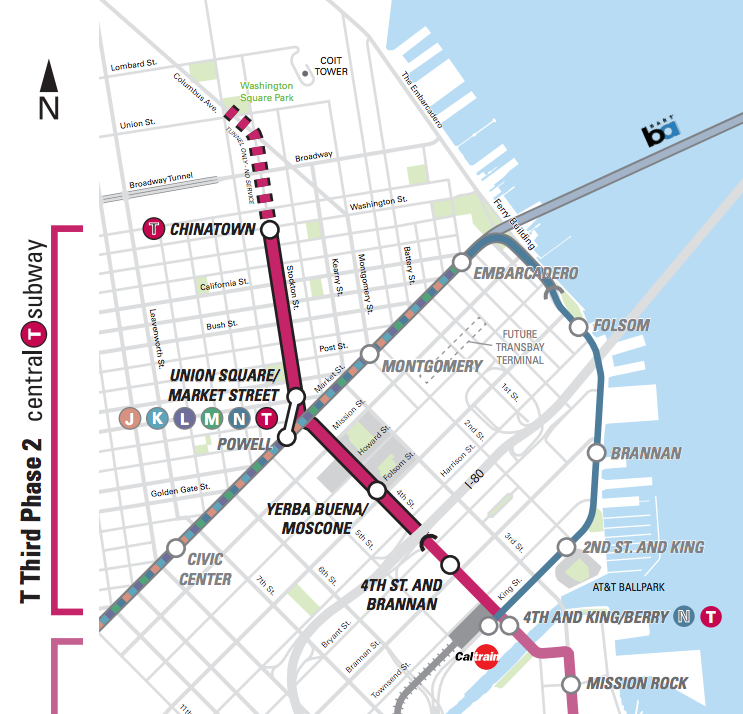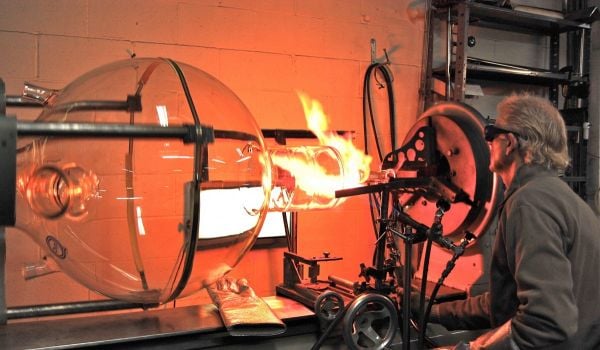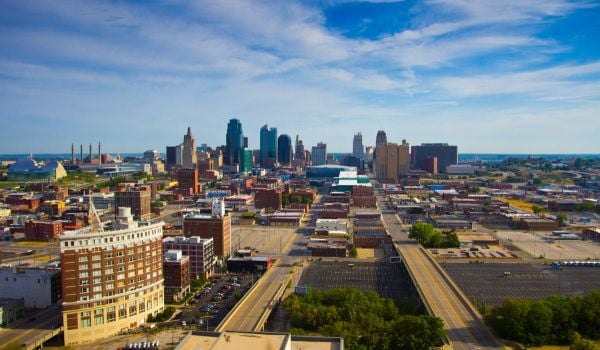Our weekly roundup of new and newsworthy transportation projects worldwide.
Connecticut Reinvents Interurban as a Busway
Back in the early decades of the 20th century, trolleys connected Hartford, the Connecticut state capital, with nearby New Britain via an interurban line operated by the Connecticut Company, the statewide streetcar operator. That line shut down for good in April 1937.
Now, CTTransit, the Connecticut Company’s successor, is bringing the interurban line back to life as a bus rapid transit corridor, slated to open in March 2015.
Dubbed CTfastrak, the BRT line is modeled on similar facilities in Ottawa and Pittsburgh that combine dedicated rapid transit bus service with local routes that will use all or part of the core busway between New Britain and Hartford.
The core of CTfastrak is a 9.5-mile dedicated busway from downtown Hartford to New Britain that will have 10 stations. A shuttle line will operate on the busway from 4:30 a.m. to 1 a.m. every day, using 60-foot articulated buses. Riders can transfer to local bus routes at the line’s terminal stations as well as intermediate stations.
Six additional routes that will use all or part of the busway will offer express and limited-stop service that extends the busway’s utility. The three express routes will continue beyond the New Britain end of the busway to Bristol, Southington and Cheshire, and Waterbury, using Interstate 84 for most of their runs beyond the busway. The three limited-stop routes will connect major destinations, including Westfarms Mall, the University of Connecticut Health Center, Manchester Community College, Central Connecticut State University and Bristol, using a combination of local streets and the busway.
The Connecticut Department of Transportation (CTDOT) is promoting the line as a fast, traffic-free alternative to often-congested I-84 and local streets. An end-to-end trip on the busway, according to the CTfastrak website, will take 20 minutes. The WiFi-equipped buses will feature level boarding from raised platforms and a ticket-based off-board fare collection system.
The federal government picked up $455 million of the busway’s $567 million construction cost through a competitive grant program.
The Hartford Courant reports that CTDOT officials will hold a series of public open houses in cities and towns along the CTfastrak routes from Dec. 2nd to Jan. 22nd to introduce the new service to current and future riders. Their key message: “This isn’t your father’s transit bus.”
Contracts Awarded to Equip, Power Third LRT Line in Guadalajara
Mexico’s Secretariat of Transportation and Construction (SCT) has awarded French railcar manufacturer Alstom and Spanish construction company OHL contracts to build the light-rail vehicles and catenary for Line 3 of Guadalajara’s light rail system, the International Railway Journal reports.
The value of the two contracts is 6.45 billion pesos ($462.5 million U.S.). Alstom will receive 4.5 billion pesos ($322.7 million U.S.) to build 18 rail cars, and OHL will be paid 1.95 billion pesos ($139.8 million U.S.) to build the electric power supply system.
Work on the 21.5-km Line 3 began in August with the start of construction on the first phase, which will run 8.65 km on an elevated viaduct with seven stations from Periférico Zapopan in the city’s northwest to Federalismo, where transfer can be made to Line 1 at Avila Camacho. OHL also received a 1.66-billion peso ($119 million U.S.) contract to build the second phase, a 7.45-km, six-station elevated section from CUCEI-Universidad de Guadalajara to Central Camonera in the city’s southeast. The line’s central section, a 5.4-km, five-station subway tunnel from Normal to Plaza de la Bandera, with transfer to Plaza Universidad on Line 2 at Catedral, will be built in the third phase of construction. The line is slated to begin service in 2017.
San Francisco Mulls Central Subway Extension
A San Francisco Chronicle story (subscription required) states that a study commissioned by the San Francisco Municipal Transportation Agency (SFMTA), the San Francisco Transportation Authority and the city planning department concludes that the extension would increase daily ridership on the subway by some 40,000, a 55 percent rise in the T-Third line’s overall ridership, and would fare well in the competition for federal New Starts funding. The New Starts program paid for $942.2 million of the current Central Subway’s total cost.
The study puts the price tag for a Fisherman’s Wharf extension at anywhere from $367 million to $1.4 billion, depending on which of 14 possible route alignments is chosen. All of them would begin at the end of the tunnel now under construction, which will extend past Chinatown station to a point near Washington Square in North Beach, where a new station could be built as part of the extension.
The study makes no recommendation for or against extending the subway but takes a detailed look at costs and benefits.
As with the Central Subway itself, the extension proposal has supporters and opponents. Julie Christiansen, a member of SF NexTstop, which supports the subway, characterized the study thusly in the Chronicle: “Basically, the study concludes that the question of whether to extend the T line is best answered by ‘Duh’ or ‘Hell, yes!’”
Howard Wong, a member of the anti-Central Subway group Save Muni, begged to differ, telling the Chronicle that the money could be better spent on new and improved bus service as well as free transit, which he said “we’re starting to see a lot around the rest of the country.” Existing bus routes serving the northeast part of the city are slow and often overcrowded.
The study is just the first step in bringing about a Central Subway extension. The next step is for the line to be included in the SFMTA’s rail strategy and in city and regional transportation plans.
Know of a project that should be featured in this column? Tweet @MarketStEl using the hashtag #newstarts.
The Works is made possible with the support of the Surdna Foundation.

Next City contributor Sandy Smith is the home and real estate editor at Philadelphia magazine. Over the years, his work has appeared in Hidden City Philadelphia, the Philadelphia Inquirer and other local and regional publications. His interest in cities stretches back to his youth in Kansas City, and his career in journalism and media relations extends back that far as well.
Follow Sandy .(JavaScript must be enabled to view this email address)


















